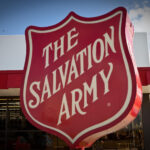When Eric E. Hoyle, a former schoolteacher from Maryland, sought spiritual fulfillment at Most Holy Family Monastery in rural Allegany County in 2005, his journey took an unexpected and litigious turn. Hoyle, then 25, donated a substantial $1.6 million to the monastery, operated by brothers Frederick and Robert Dimond. However, disillusionment led Hoyle to depart the monastery after two years, subsequently filing a federal lawsuit to reclaim his significant donation. This legal battle has ignited discussions around religious freedom and accusations of financial fraud against the Most Holy Family Monastery and its leaders.
Hoyle’s lawsuit accuses the Dimond brothers of operating a fraudulent scheme, alleging they misrepresented the monastery’s operations and religious doctrines. According to court documents filed in the U.S. District Court, Western District of New York, Hoyle claims he was misled about the monastery’s affiliation. He asserts that he was unaware that Most Holy Family Monastery was not associated with the traditional Benedictine Order, preventing him from becoming a recognized Benedictine monk as he intended.
K. Wade Eaton, Hoyle’s legal representative, stated, “The issue is whether or not these guys are really Benedictine monks.” In court filings, Eaton further alleges a “racketeering scheme” orchestrated by the Dimonds to defraud individuals through their website, mailings, and publications.
Countering these accusations, Charles Ritter, the Dimonds’ attorney, argues that Hoyle was not deceived and willingly donated to the monastery. “It’s not like they went and found him. He went out and found them,” Ritter stated. “They didn’t tell him he had to give them everything. It was a decision he made… He knew what he was doing. He was not misled. He was very well read and up to speed on what their beliefs were.”
The Dimonds defend their right to identify as Benedictines, citing First Amendment protections. Robert Dimond stated in an audio recording on the monastery’s website, “It’s a First Amendment right that we can profess to be Benedictines, and we believe we are. The state can’t determine that, the government can’t determine that. It can’t rule on who is or who is not a Benedictine, just like it can’t determine what is a true church or define what a church is, OK. It doesn’t get entangled in those religious disputes.”
Defamation Countersuit Filed by Most Holy Family Monastery
In response to Hoyle’s lawsuit, the Dimond brothers have launched a countersuit, accusing Hoyle of defamation and misuse of confidential monastery records. They seek damages of at least $5 million, alleging Hoyle stole proprietary information to harm the monastery and its donor relationships.
A woman identifying herself as “Sister Ann” at the monastery declined interview requests from the Dimonds, directing inquiries to the Most Holy Family Monastery website. The website features a 90-minute audio recording of the Dimonds addressing Hoyle’s allegations.
In the recording, Robert Dimond contends that Hoyle was fully aware of the monastery’s stance against the post-Vatican II Catholic Church. He dismisses Hoyle’s claims of deception as “the height of absurdity.” Dimond explains, “What are we most known for? Exposing the Vatican II church and opposing its heretical teachings, its heretical religious orders, and so we’re actually being sued for making it look like supposedly we are part of the Vatican II Benedictines when we’re not.”
The Dimonds utilize the initials “O.S.B.” after their names, seemingly indicating affiliation with the Order of St. Benedict. Traditional Benedictine monks adhere to the Rule of St. Benedict, emphasizing moderation and balance between prayer and manual labor, in contrast to more austere monastic orders.
Most Holy Family Monastery: Traditionalist Catholic Standpoint
The Most Holy Family Monastery website identifies Brother Joseph Natale as the community’s founder, who was initially trained at St. Vincent’s Archabbey in Latrobe, Pennsylvania. Natale later established a Benedictine community in New Jersey before Frederick Dimond, also known as Brother Michael, became the superior after Natale’s death. In 1997, the monastery relocated to Fillmore, New York, following a land donation.
The Dimonds have established a distinct position within fringe traditionalist Catholicism, primarily through their online presence and publications. Their website articulates their controversial views, including considering Pope Benedict XVI an “anti-pope” and criticizing even other traditionalist groups like the Society of St. Pius X for insufficient conservatism. They reject post-Vatican II Masses as invalid and advise against attending them. Furthermore, they deem priests not ordained in the traditional Latin rite as illegitimate.
Concerns from the Catholic Diocese
These radical stances have raised concerns among mainstream Catholics and Catholic apologetics groups, who worry about the monastery’s claims of representing authentic Catholic teaching. Kevin A. Keenan, spokesperson for the Catholic Diocese of Buffalo, confirmed that the monastery is not affiliated with the Diocese or the Catholic Church.
Rev. Dennis Mancuso, pastor of St. Patrick Church in Fillmore, echoed these concerns, stating, “I get calls all the time. People want to know if they’re Catholic and I tell them no. I don’t know what their status is, but they’re certainly not Catholic. I don’t know how they can claim to be remotely Catholic at all.”
Hoyle’s Donations and Disillusionment
Eric Hoyle’s financial contributions to Most Holy Family Monastery began in 2005 with smaller donations before escalating significantly. Following visits to the monastery, Hoyle sought postulancy and agreed to relinquish his assets, as stipulated by Frederick Dimond, according to court documents. In November 2005, Hoyle transferred over a million shares of Guinor Gold Corp., valued at $1.2 million at the time, to the monastery. He followed this with an additional $307,989 in brokerage assets approximately a year later.
Hoyle, known as “Brother Edmund” within the monastery, claims his disillusionment grew after realizing the monastery’s true nature and lack of affiliation with the Benedictine Order he recognized. This realization ultimately led to his departure and the ensuing legal battle to recover his substantial donations from Most Holy Family Monastery. The case remains a contentious dispute involving religious identity, financial dealings, and freedom of religious expression.

